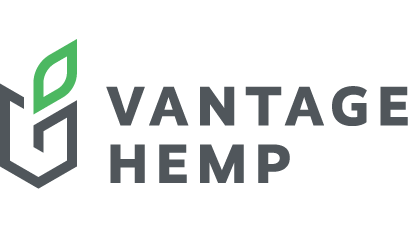
17 Apr This is how cannabis gets turned into CBD
CANNABIDIOL, OR CBD, as it’s better known, was once only a concern of the most tiresome of stoners. Now you can find it in tampons, face creams, ice creams, hummus, water, and at Tesco. It’s a multibillion-dollar industry: the UK’s CBD market alone has been forecast to reach $1.2 billion by 2025.
This explosion in popularity can be traced back, in the UK at least, to 2016, when the Medicines and Healthcare products Regulatory Agency (MHRA) ruled that products containing cannabidiol used for medical purposes had to be classified as a medicine. This focus from the government kick-started a UK interest in the product, says Harry Sumnall, a professor in substance use at the Public Health Institute. “All of a sudden, there’s a lot of media articles,” he says – it catapulted CBD into the national consciousness. “That provided some really nice context to have that wider public discussion about CBD.”
A broader factor, says Saoirse O’Sullivan, a pharmacology professor and consultant, has been the wider acceptance of cannabis as a medicinal product, with a number of countries legalising its use with a prescription. CBD is one of the two active components of cannabis, along with THC (tetrahydrocannabinol) – which remains illegal in Britain (for instance cannabis oil can only contain 0.2 per cent THC.) “The availability of CBD allows people to try a cannabis product,” says O’Sullivan.
Colorado-based company Vantage Hemp is one of the key suppliers to the UK market. It’s headquartered in Greeley, about an hour north of Denver – a city that was traditionally based on agriculture, oil, gas and beef, but one that welcomed a new industry with open arms. “When we first came to Greeley, they were very encouraging,” says Deepank Utkhede, Vantage Hemp’s COO. “They wanted us to set up shop; they really wanted to become the hemp hub of Colorado – the city came to us with that.”
Vantage owns two buildings spread over 60,000 square feet. The first of these, Falcon, measures 35,000 square feet. It’s where farmers drop off the green needles of the hemp flower – “the biomass” in Utkhede’s words – in huge sacks: anywhere from 10 to 52 bags, depending on the size of the truck. Vantage can process five tons of biomass every day. A sample is taken from each bag and tested in a lab. (Testing, says Utkhede, is a key to every stage of the process). Utkhede’s team are looking for potency: they need a minimum of six to seven per cent CBD per bag; any less than that isn’t economical.
These small samples are themselves sampled. A third party lab tests these for potency, pesticides, heavy metals and microbes. These all give an insight into the life of the biomass before it reached the factory, explains Utkhede: pesticides tell you how it was grown; microbial tests tell you how it was stored; heavy metals tell you where it was from, because each growing region has a particular heavy metal profile. Once Vantage gets the results back from these tests, the biomass is released from quarantine and the process of making CBD begins.
The next step is called decarboxylation: the biomass is heated in what is essentially a commercial oven to trigger a chemical change. The physiologically active form of the drug, or the molecule, is the decarboxylated form: this is why you need to smoke marijuana, or bake it into brownies, to get high.
After further testing, the biomass is fed into giant “extraction socks.” “We don’t put loose biomass into our extraction systems because it’s messy, and it results in a mess in our extraction area,” explains Utkhede. Operators place these socks into extraction columns. Here, the biomass socks go through either one of two extraction processes, separating off what’s known as crude extract via carbon dioxide or hydrocarbon extraction.
This crude extract then goes through a process called ‘winterization’: it’s heated up until it’s liquified, injected into a tank that contains methanol, heated until it dissolves, then chilled to minus 20 degrees Celsius. That creates a slurry, almost like a solid, says Utkhede. “And when we’re looking at making tinctures or slabs and lotions, you need something that’s a clear solution,” he says.
Sock filters remove waxes and other impurities. The resulting fluid is still thick, but it’s a clear solution that’s no longer paste-like. The solution is filtrated again, then the methanol is evaporated off – it’s a ten to one ratio of methanol to oil – leaving behind full-spectrum oil: one of Vantage’s three main products. (This oil still has illegally high THC levels, though, and needs to be diluted down for transportation.)
Now the oil can be distilled, through a system that uses high temperature and very high vacuum to evaporate the oil and then recondense it. This two-stage process turns it from a dark mixture, almost black, to a hot river of clear amber, the colour of pasteurized honey. “It’s very, very beautiful,” Utkhede. “That amber colour is really intense.”
The distillate is now at 75 to 85 per cent CBD content, and forms another of Vantage’s products. After the final crystallization process, in which everything that isn’t CBD is purged, you’re left with a final, off white-power, CBD isolate. At 99.45 per cent CBD, that’s the end product: CBD in its purest form.
Utkhede emphasizes that Vantage is not just for food supplements. “We built the facility to be compliant with not only the food regulations, but more importantly, we built the facility to be compliant with the Good Manufacturing Practices for active pharmaceutical ingredients,” he says. “We do consider what we make a pharmaceutically active ingredient, not a nutraceutical, or a food additive.”
Vantage Hemp meets the UK’s Novel Foods standard, which the vast majority cannot.”We’ve really strived to establish a higher level of compliance within the industry, when it comes to the manufacture of CBD,” says Utkhede.
This distinction is important because it pertains to current debates surrounding CBD, explains Sumnall. For pharmaceutical preparations, the evidence is mounting that CBD has a valuable role to play in treating a whole range of different conditions, diseases and disorders, from rare forms of epilepsy, muscle spasticity, and brain cancer.
“There is growing evidence of the therapeutic benefits of CBD in a range of disease through randomized controlled trials (the gold standard for clinical research),” agrees O’Sullivan. Yet this work is using much higher doses of CBD than in over the counter products you find on the high street or online.
The evidence for these products, says Sumnall, is shaky to non-existent. Their popularity has largely been driven by clever marketing, and an implicit association with medical practices. There is a general research gap when it comes to these high street products.
The UK is one of the strictest regulators of the claims: the classification of CBD as a novel food means that the producers of CBD products need to make a novel food application that requires some data on their products. “UK legislation means that manufacturers and retailers have to be very, very careful about the claims that they make, because MHRA specified CBD as a medicinal product back in 2016,” says Sumnall. “Therefore that means that if manufacturers and retailers make claims, then that has to be for licenced and market authorized products.”
CBD has developed into a huge industry – and Vantage Hemp is just one of the companies distilling it from a sticky residue into a clear liquid. There’s less transparency over whether it actually works as claimed in many products, though. “You would think that with this massive income, and this massive interest there would be research into the effects and the efficacy against some of the claims which are provided by these high street products, and that is not emerging,” Sumnall says.

Sorry, the comment form is closed at this time.